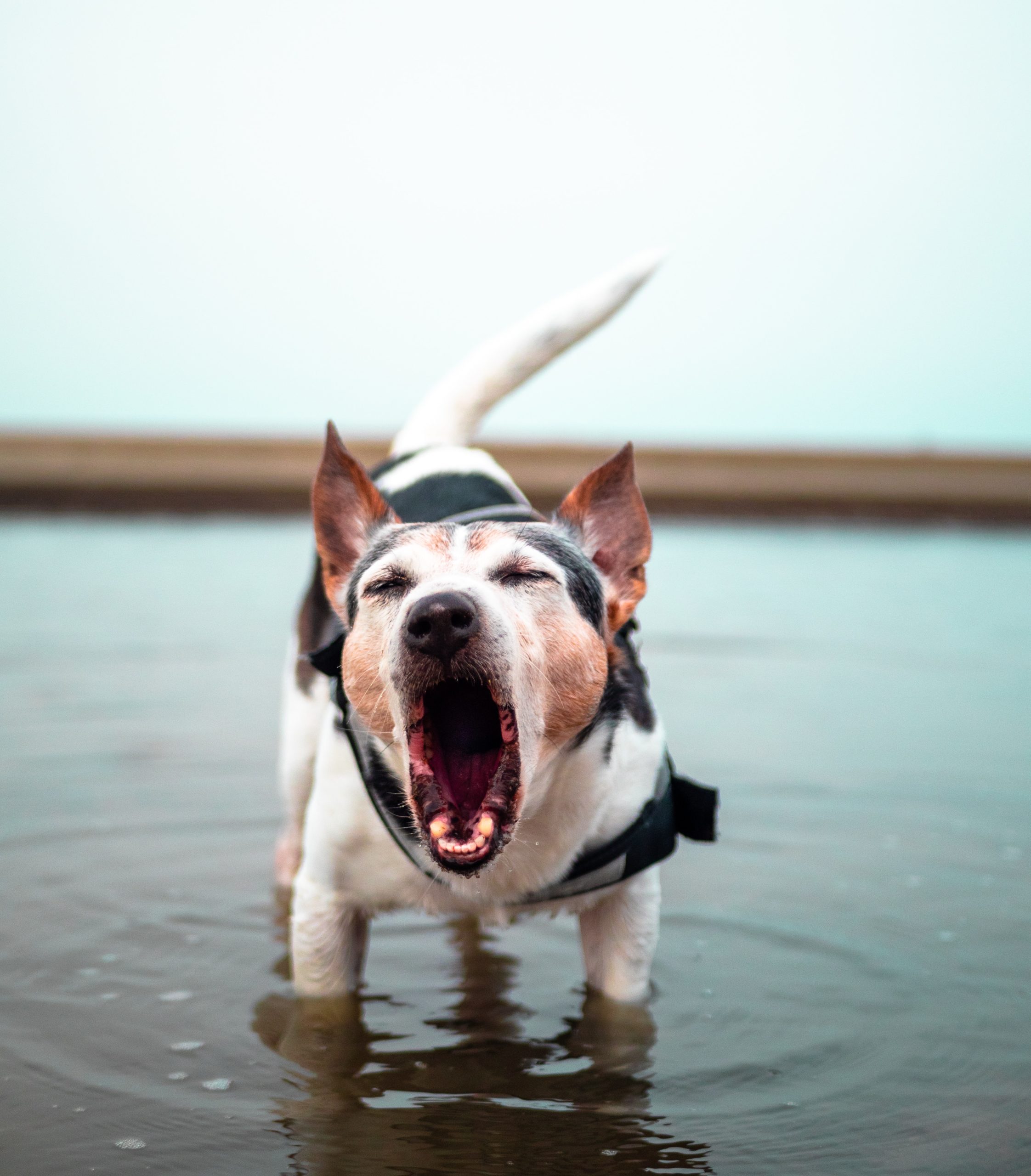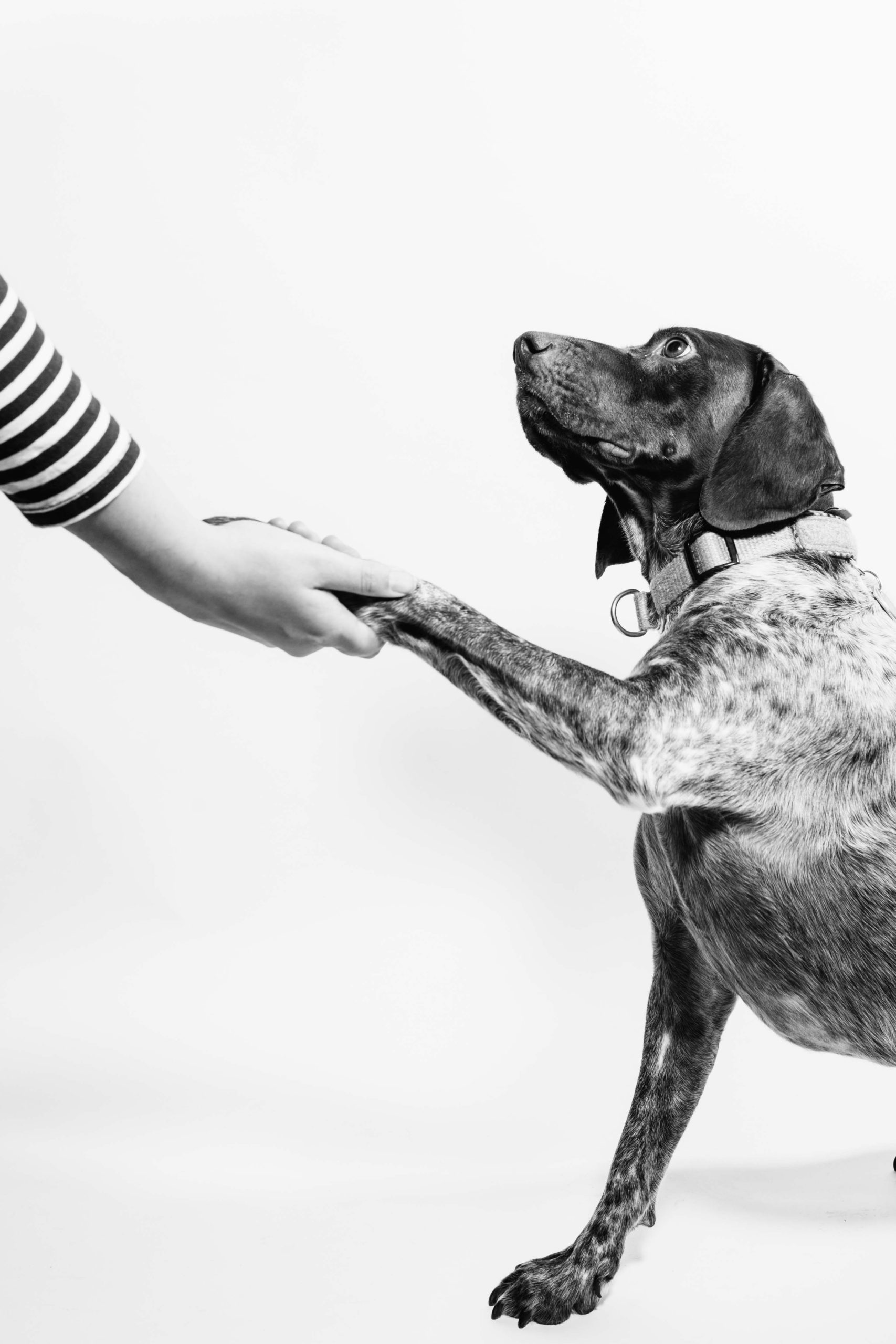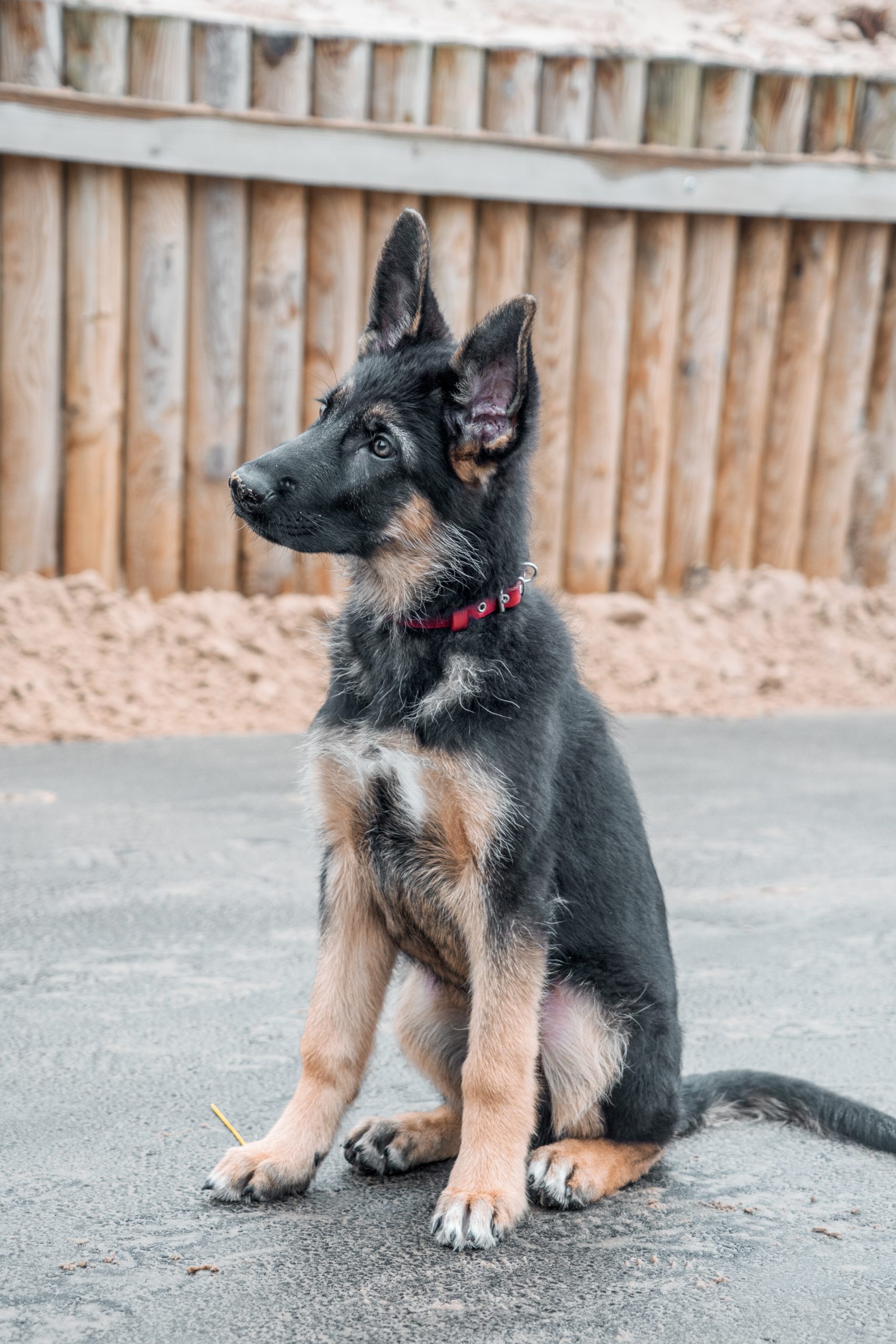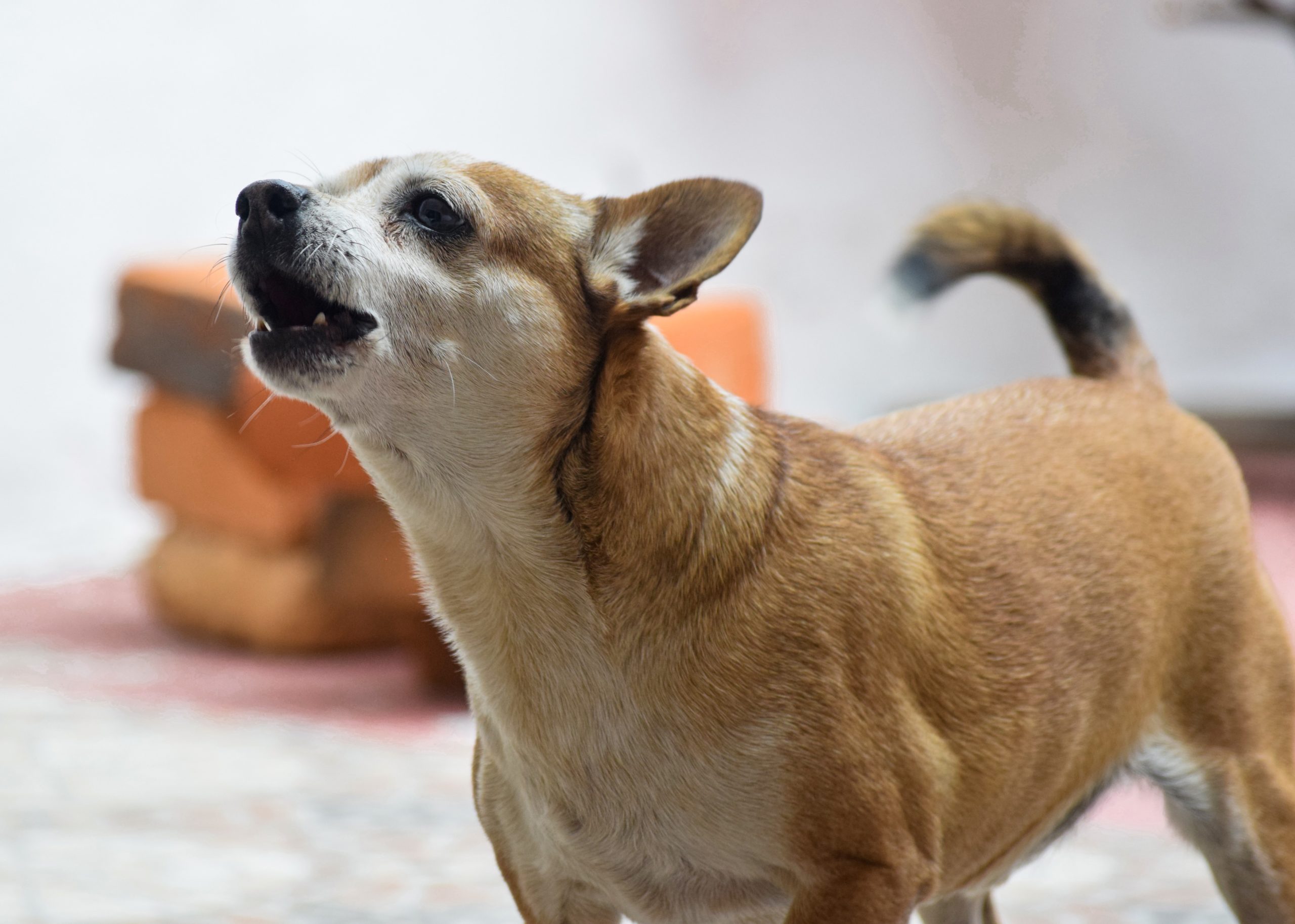Have you ever found yourself unsure of how to interpret an aggressive dog’s body language? It’s crucial to recognize these signals, as they play a vital role in canine communication. By understanding aggressive body language, we can prevent potentially dangerous situations from escalating. This includes observing the excited dogs’ gestures, barks, and facial expressions.
Dogs have their own unique language, including aggressive signals and fear signals. Arousal levels, direct stares, and the positioning of their front legs all convey important messages. Paying attention to their bark and overall body gesture provides valuable insights into their intentions. Even seemingly playful dogs may exhibit subtle signs of aggression that we need to decipher.
By delving into the world of aggressive dog body language, which includes facial expressions, postures, and arousal signals, we gain the ability to accurately interpret these signals. This knowledge empowers us to respond appropriately and safely navigate interactions with our four-legged companions in shelters.
So, let’s explore the intriguing realm of canine communication through body language and learn how it can help us better understand our playful, relaxed, anxious, and happy dogs’ emotions and behaviors.
Signs of Aggression in Dogs: Recognizing Aggressive Dog Body Language
Aggression in dogs can be a concerning issue, and it’s crucial for dog owners and enthusiasts to understand the signs of aggression.
By familiarizing ourselves with aggressive dog body language, which includes fear signals, postures, and heightened arousal, we can better identify potential aggression and take appropriate action, such as providing safe shelters.
Common signs of aggression in dogs
There are several key signs to watch out for:
- Tail Wagging: Contrary to popular belief, not all wagging tails indicate friendliness. A stiff or high tail wag may be a sign of aggression rather than happiness.
- Barking: While barking is a normal form of communication for dogs, an aggressive bark tends to sound deep and threatening.
- Gestures: Aggressive dogs often display dominant gestures such as standing tall, leaning forward, or raising their hackles (the hair on their back).
- Facial Expressions: Intense staring with a fixed gaze, wrinkled muzzle, raised lips revealing teeth (snarling), or a closed mouth with clenched jaw are facial expressions commonly associated with aggression.
- Body Movements: Quick and jerky movements can indicate an agitated state in dogs.
Physical cues indicating potential aggression
In addition to the common signs mentioned above, specific physical cues such as a raised tail, intense eyes, and a tense feeling can give us further insight into a dog’s potentially aggressive behavior.
- Yawning: Dogs may yawn when feeling anxious or stressed. It is important not to confuse this yawning behavior with tiredness.
- Signs of tension: Raised hackles (hair on the back), rigid body posture, and tense muscles are indications that a dog might be readying itself for an aggressive encounter.
- Freezing: When a dog freezes, it often means they are assessing a situation and preparing to act. This can be a precursor to aggressive behavior.
- Lunging or charging forward: Dogs that lunge or charge without provocation may be exhibiting aggressive tendencies.
Behavioral indicators of aggressive behavior
Apart from physical cues, certain behavioral indicators can help us identify aggression in dogs. One such indicator is the position of the tail, which can give us a feeling about a dog’s mood.
- Growling: A low, guttural growl is a clear warning sign that a dog is feeling threatened or aggressive.
- Snapping and biting: These are obvious signs of aggression and should not be ignored.
- Resource guarding: Dogs that aggressively protect their food, toys, or personal space may display possessive behavior indicating aggression.
- Escalation: Aggressive behavior can escalate over time if not addressed properly. It’s important to intervene early and seek professional help if necessary.
By understanding the various signs of aggression in dogs, we can better ensure the safety of both humans and other animals around them. If you have concerns about your dog’s behavior or feeling consult with a professional trainer or veterinarian who specializes in canine behavior for guidance tailored to your specific situation.
Interpreting Canine Body Language: Decoding Aggressive Signals
Understanding the meaning behind different dog postures and expressions is crucial for interpreting their feelings. Dogs communicate primarily through their body signals, including facial expressions, wagging tails, and positioning of their rear legs. By paying close attention to these cues, we can gain valuable insights into their emotional states and potential aggressive tendencies.
Key body language signals that suggest aggression are often subtle but significant. One such signal is lip licking. When a dog licks its lips in the absence of food or water, it can indicate stress or anxiety.
This behavior may be accompanied by other fear signals such as lowered ears, dilated pupils, and a tense body posture. It is important not to dismiss these signs as insignificant since they could escalate into aggressive behavior if the underlying issues are not addressed.
Another important signal to watch for is the positioning of a dog’s tail. While a wagging tail generally signifies excitement or happiness, an aggressive dog may hold its tail stiffly upright or even tuck it between its legs.
These positions indicate tension and potential readiness for conflict. Similarly, a dog baring its teeth should never be taken lightly as it is one of the most obvious signs of aggression.
Identifying subtle signs of stress or fear that may lead to aggression requires careful observation. A stressed dog may exhibit behaviors such as yawning excessively, pacing back and forth, or freezing in place while staring intently at something. These behaviors can serve as warning signs that the dog feels threatened and might resort to aggression if pushed further.
It is also essential to consider the direction of a dog’s gaze when assessing its body language. A direct stare with fixed eyes can be seen as confrontational and potentially aggressive behavior. On the other hand, averting their gaze or looking away indicates submission or discomfort in certain situations.
The position of a dog’s ears can provide valuable insights into its emotional state. When a dog’s ears are forward and alert, it usually indicates attentiveness or excitement. However, flattened or pinned-back ears suggest fear or anxiety. Understanding these ear positions can help us determine whether a dog is displaying aggressive tendencies or is simply feeling threatened.
In addition to specific body signals, it is important to consider the overall context in which these signals occur. Dogs may display conflicting body language, making it challenging to interpret their intentions accurately.
For example, a dog may wag its tail while growling or show signs of aggression while appearing otherwise relaxed. This conflict in body signals highlights the complexity of canine communication and emphasizes the need for careful observation and understanding.
Communicating with Dogs: How to Respond to Aggressive Dog Body Language
Importance of remaining calm and confident when faced with an aggressive dog
When encountering an aggressive dog, it is crucial to remain calm and confident. Dogs are highly perceptive animals that can sense fear and anxiety, which may further escalate their aggression.
By staying composed, you send a message that you are in control of the situation and not a threat. Take deep breaths and maintain a relaxed posture to help convey your confidence.
Techniques for deescalating tense situations through non-threatening gestures and vocal cues
To deescalate tense situations with an aggressive dog, it is essential to use non-threatening gestures and vocal cues. Avoid making sudden movements or loud noises that may provoke the dog further.
Instead, adopt a relaxed body language by keeping your arms at your sides and avoiding direct eye contact. Direct eye contact can be perceived as confrontational by dogs, so it’s best to look away or glance sideways.
Vocal cues also play a significant role in communicating with dogs. Speak softly and gently, using a soothing tone to help diffuse the tension.
Offering words like “calm” or “relax” in a low voice can have a calming effect on both you and the dog. Remember, dogs rely heavily on non-verbal communication, so maintaining a calm demeanor through your body language and voice is key.
Establishing clear boundaries and assertive yet non-confrontational communication
Establishing clear boundaries is vital when dealing with an aggressive dog. While it’s important not to appear threatening, you must assertively communicate what behavior is acceptable and what is not. Use firm but gentle commands such as “sit” or “stay,” ensuring consistency in your tone of voice.
Non-confrontational communication involves avoiding actions that may exacerbate aggression. Refrain from reaching out suddenly or invading the dog’s personal space without permission. Give the dog the opportunity to approach you voluntarily, allowing them to feel more comfortable and in control of the situation.
Remember that each dog is unique, so it’s important to gauge their response and adjust your communication accordingly. Some dogs may respond well to a calm touch or gentle petting, while others may prefer space and time to relax. Pay attention to their body language and respond accordingly.
By understanding dog communication and responding appropriately to aggressive body language, you can effectively navigate tense situations with dogs.
Remain calm and confident, use non-threatening gestures and vocal cues, establish clear boundaries, and communicate assertively yet non-confrontationally.
With these techniques in mind, you can build trust with dogs and promote a safer environment for both humans and our furry friends.
Tips for Safely Handling Aggressive Dogs: Effective Strategies and Techniques
Implementing safety measures when dealing with aggressive dogs
It’s crucial to prioritize safety. Fearful dogs or those with a history of aggression may exhibit warning signs such as growling, barking, lunging, or showing their teeth. To ensure your safety and the well-being of others around you, here are some essential safety measures to implement:
- Approach with caution: When encountering an aggressive dog, approach slowly and avoid sudden movements that might escalate their fear or aggression. Give them space and time to assess your presence.
- Read the body language: Understanding a dog’s body language is vital in determining their emotional state. Look for signs of stress like flattened ears, a tucked tail, raised hackles, or dilated pupils. These cues can indicate fear or anxiety.
- Avoid direct eye contact: Direct eye contact can be perceived as a threat by fearful dogs and may trigger defensive behavior. Instead, glance away while keeping the dog in your peripheral vision to monitor their actions.
- Stay calm and assertive: Dogs are highly perceptive creatures who can sense human emotions easily. Maintaining a calm and confident demeanor will help reassure them that there is no immediate danger.
- Use positive reinforcement techniques: Employing positive reinforcement methods is crucial when dealing with aggressive dogs. Rewarding desired behaviors helps redirect their focus from aggression towards more appropriate actions.
Using positive reinforcement techniques to redirect aggressive behavior
Positive reinforcement techniques provide effective strategies for modifying aggressive behavior in dogs while strengthening the human-animal bond:
- Reward-based training: Use treats, praise, or play as rewards for good behavior exhibited by the dog during training sessions.
- Counter-conditioning: Gradually expose the dog to situations that trigger aggression while associating them with positive experiences. For example, if a dog becomes aggressive around other dogs, gradually introduce controlled interactions with well-behaved and friendly canines.
- Desensitization: Gradually expose the dog to fear-inducing stimuli at a distance where they remain calm and reward them for their relaxed behavior. Over time, decrease the distance between the dog and the trigger while ensuring they stay comfortable.
- Redirecting attention: Teach the dog alternative behaviors to replace aggression, such as “sit,” “stay,” or “leave it.” This helps redirect their focus away from potential triggers and towards more positive actions.
Employing tools such as muzzles or leashes for added safety during interactions
In addition to implementing training techniques, using management tools can provide an extra layer of safety when handling aggressive dogs:
- Muzzles: Muzzles are valuable tools that prevent biting during interactions with fearful or aggressive dogs. Introduce muzzles gradually, associating them with positive experiences like treats or playtime.
- Leashes: Keeping dogs on a leash provides control during walks or encounters with unfamiliar people and animals. It allows you to maintain a safe distance while ensuring the dog’s ability to explore their surroundings without posing a threat.
Working with aggressive dogs requires expertise and caution. Seeking guidance from professionals in shelters or rescues can provide invaluable information on effective strategies tailored to each individual case.
Responding to Aggression: Dos and Don’ts for Dealing with Aggressive Dogs
Appropriate actions to take when confronted by an aggressive dog
Here are some dos and don’ts for dealing with aggressive dogs:
- Remain calm: It’s natural to feel fearful or anxious when encountering an aggressive dog, but it’s essential to stay composed. Dogs can sense our emotions, so maintaining a calm demeanor will help prevent escalating the situation.
- Give space: One of the first steps you should take is creating distance between yourself and the aggressive dog. Slowly back away while avoiding sudden movements that may provoke them further.
- Create barriers: If possible, put physical barriers between you and the dog. This could be using objects like trees, cars, or even your bag as a shield to maintain separation until help arrives.
- Use appeasement signals: Dogs communicate through body language, so it’s important to use calming signals that they understand. Avoid direct eye contact as this can be seen as confrontational; instead, look away or blink softly. Turn your body sideways rather than facing them head-on, which can appear threatening.
- Speak softly: In a gentle tone, speak soothingly to the dog without raising your voice or shouting at them. Soft vocalizations can potentially help defuse their aggression.
- Allow them an escape route: Ensure that there is a path for the aggressive dog to retreat if they choose to do so. Cornering them may escalate their behavior out of fear or desperation.
Avoidance strategies, such as giving space or creating barriers
When dealing with an aggressive dog, avoidance strategies play a vital role in protecting yourself from harm while minimizing stress for the animal:
- Give space: As mentioned earlier, maintaining distance is crucial. By giving the dog ample room, you reduce the likelihood of triggering their aggression further.
- Create barriers: If you’re in a situation where escape is not immediately possible, creating physical barriers can help keep both parties safe. Use objects or structures to create separation and prevent the dog from reaching you.
- Seek higher ground: Climbing onto an elevated surface like a bench or car can deter an aggressive dog from approaching you. Dogs often feel less confident when their target is at a higher level.
What not to do when faced with an aggressive dog
While it’s essential to know what actions to take, it’s equally important to understand what behaviors should be avoided when confronted by an aggressive dog:
- Avoid eye contact: Direct eye contact can be perceived as a challenge or threat by dogs. Instead, look away or divert your gaze while remaining aware of their movements.
- Don’t make sudden movements: Abrupt motions may startle the dog and escalate their aggression. Move slowly and deliberately without making any sudden gestures that could trigger them.
- Refrain from running: Running away from an aggressive dog can trigger their prey drive and potentially lead to a chase. Instead, maintain a steady pace while moving away calmly.
Every encounter with an aggressive dog is unique, and professional assistance should always be sought whenever possible.
Seeking Professional Help: When to Consult a Dog Behaviorist or Trainer
Aggression in dogs can be a serious issue that requires professional intervention. While some aggressive behaviors can be managed with basic training techniques, there are certain indications that consulting a dog behaviorist or trainer is necessary for the safety and well-being of both the dog and those around them.
Indications that professional intervention is necessary for managing aggression issues
- Severe aggression: If your dog displays intense aggression towards people or other animals, such as lunging, biting, growling, or snarling, it’s crucial to seek professional help. These aggressive behaviors can pose a significant risk and should not be taken lightly.
- Reactive behavior: Dogs that react aggressively to specific triggers or stimuli may require specialized assistance. Whether it’s fear-based aggression towards strangers, territorial behavior, resource guarding, or leash reactivity, a professional can assess the situation and provide appropriate guidance.
- Escalating aggression: If your dog’s aggressive behaviors are becoming more frequent or intense over time, seeking professional help becomes imperative. Ignoring escalating aggression can lead to dangerous situations and may exacerbate the problem in the long run.
Benefits of consulting a qualified dog behaviorist or trainer
- Expertise in understanding canine behavior: Dog behaviorists and trainers possess extensive knowledge about canine psychology and body language. They can accurately interpret your dog’s behaviors and identify underlying causes of aggression.
- Customized training plans: A qualified professional will create tailored training plans based on your individual dog’s needs. They will take into account factors such as breed tendencies, age, temperament, and previous experiences to develop effective strategies for managing aggression.
- Safe environment for learning: Working with a professional provides a controlled setting where you and your dog can learn how to address aggressive behaviors safely. They will guide you through exercises designed to modify your dog’s behavior, ensuring the well-being of everyone involved.
Finding the right professional who specializes in working with aggressive dogs
- Research and recommendations: Start by researching local dog behaviorists or trainers who specialize in dealing with aggression issues. Seek recommendations from trusted sources such as veterinarians, friends, or online communities dedicated to dog training.
- Credentials and experience: Look for professionals with relevant certifications and extensive experience in working with aggressive dogs. Credentials like Certified Professional Dog Trainer (CPDT) or Certified Applied Animal Behaviorist (CAAB) indicate a high level of expertise.
- Positive reinforcement techniques: Choose a professional who emphasizes positive reinforcement training methods rather than punitive approaches. Positive reinforcement focuses on rewarding desired behaviors, creating a more trusting bond between you and your dog.
- Compatibility and communication: Schedule consultations with potential professionals to assess their compatibility with you and your dog. Effective communication is essential, so ensure that they listen to your concerns, answer your questions, and explain their training approach clearly.
Consulting a dog behaviorist or trainer is not admitting defeat but rather taking proactive steps and can be essential towards resolving aggression issues in your beloved pet.
With the right guidance and support, it is possible to modify aggressive behaviors and create a safer environment for both your dog and those around them.
Key Takeaways on Understanding and Managing Aggressive Dog Body Language
Here are some key takeaways to keep in mind:
- Signs of Aggression: It’s important to be able to recognize the signs of aggression in dogs. These may include growling, snarling, baring teeth, raised hackles, stiff body posture, intense staring, or lunging towards a person or another animal.
- Interpreting Canine Body Language: Dogs communicate through their body language. By understanding their signals, such as a tucked tail, ears pulled back, or a lowered head, you can better assess their emotional state and potential for aggression.
- Responding to Aggressive Signals: When confronted with aggressive dog body language, it’s essential not to panic or escalate the situation further. Avoid direct eye contact and slowly back away without turning your back on the dog. Do not make sudden movements that could trigger an attack.
- Tips for Safely Handling Aggressive Dogs: If you find yourself in a situation where you need to handle an aggressive dog, it’s important to stay calm and composed. Use distraction techniques like throwing objects away from yourself or using a barrier between you and the dog until help arrives.
- Dos and Don’ts for Dealing with Aggressive Dogs: It’s crucial to know what actions can help diffuse a tense situation with an aggressive dog and what actions should be avoided at all costs. For example, never punish an aggressive dog as it may exacerbate their behavior.
- Seeking Professional Help: If you’re struggling to manage your dog’s aggression or if you encounter a consistently aggressive dog that poses a threat to others’ safety, it is advisable to consult a professional dog behaviorist or trainer. They can provide expert guidance and develop a tailored plan to address the issue.
Remember, always prioritize safety when dealing with aggressive dogs. If you feel unsure or unsafe, it’s best to seek professional assistance rather than attempting to handle the situation on your own.
Frequently Asked Questions
Q: Can an aggressive dog be trained to become non-aggressive?
A: With proper training and behavior modification techniques, many aggressive dogs can learn to exhibit less aggression. However, it is important to consult a professional dog trainer or behaviorist who specializes in aggression issues for effective guidance.
Q: Is it possible for an aggressive dog to be rehabilitated?
A: Yes, rehabilitation is possible for some aggressive dogs. It often involves a combination of training, socialization, and addressing underlying factors that contribute to their aggression. However, success may vary depending on the individual dog and their specific circumstances.
Q: How can I prevent my dog from becoming aggressive?
A: Early socialization and positive reinforcement training are key in preventing aggression in dogs. By exposing them to various environments, people, and animals from a young age, you can help them develop good social skills and reduce the likelihood of aggression later on.
Q: Should I punish my dog for showing signs of aggression?
A: No, punishing an aggressive dog is not recommended as it can worsen their behavior and potentially make them more dangerous. Instead of punishment, focus on positive reinforcement training techniques that reward desired behaviors.
Q: Are certain breeds more prone to aggression than others?
A: While breed does play a role in a dog’s temperament, it is important not to generalize or stereotype any particular breed as being inherently aggressive. Aggression is influenced by various factors including genetics, socialization experiences, and individual temperament.
These FAQs provide answers to common questions about managing aggressive dog body language. Remember that seeking professional advice is crucial for addressing specific concerns and ensuring the safety of all involved parties.



